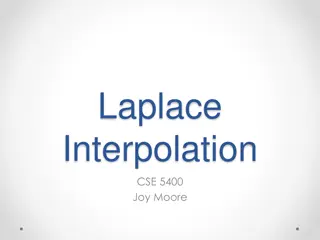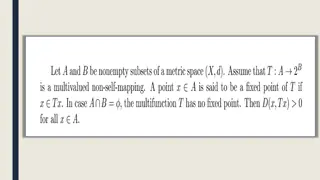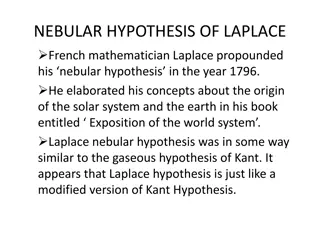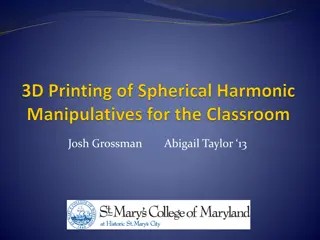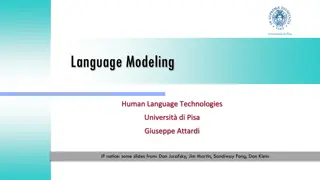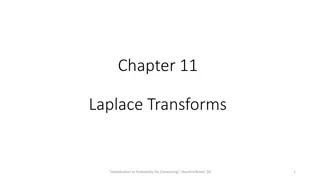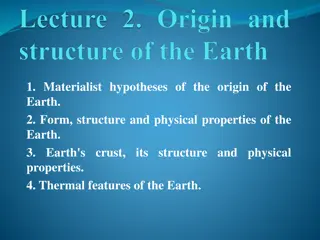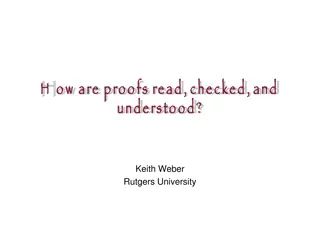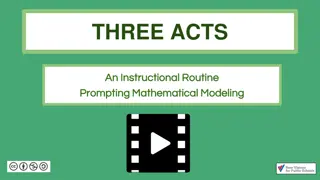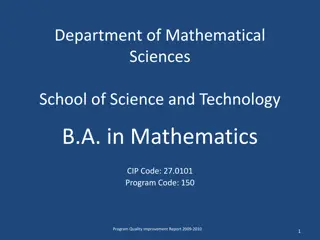Understanding Laplace Transform in Mathematical Modeling
Explore the concept of Laplace Transform in mathematical modeling through equations and physical interpretations. Learn how this tool helps in reconstructing functions using exponentials. Practice and patience are key to mastering these subtle ideas.
Download Presentation

Please find below an Image/Link to download the presentation.
The content on the website is provided AS IS for your information and personal use only. It may not be sold, licensed, or shared on other websites without obtaining consent from the author. Download presentation by click this link. If you encounter any issues during the download, it is possible that the publisher has removed the file from their server.
E N D
Presentation Transcript
Chapter 13 - 2 MIMs - Mobile Immobile Models Diffusive Mobile Regions
So why am I teaching you this Let s stay wit this case a flow channel and an immobile region next to it that can exchange mass. However our mobile domain diffuses and send mass both ways What equations should we use here??
What about just diffusion Now our equations are First Laplace Transform Again, we can combine these into a single ODE that can be solved
Again, we use Mathematica and Matlab to solve the problem In fact just going into Laplace space is not quite enough as we the derivate in space causes some problems so we Fourier Transform also Now we go to Mathematica to solve and invert these. We can only invert back to Laplace space and then invert numerically to real space with Matlab as before
Now, many of you have said you struggle with what LT and FT mean so let s take a step back Here are the equations These may or may not help, but let s see if we can understand them .
If nothing else Well, the same can be said of the Fourier transform in taking x to k Not very satisfying so let s look at the physical interpretation of the mathematics Let s start with Laplace Transform
Laplace Transform The formula says you are multiplying your function by an exponential in time that decays at a rate s (s can take any value for 0 to infinity) When you integrate you are basically asking how much of the function is captured by tempering it with that exponential . As s approaches 0 you get more and more and as s goes to infinity you get less and less It tells you in some sense how you could reconstruct your function by adding together lots and lots of exponentials These are very subtle ideas that even experts struggle with so don t worry if you don t get it immediately practice makes perfect
Example Consider the function f(t)=1 Calculate and think about what the following mean (draw a picture) Do you see what is happening? Well the Laplace transform does this for all s for any function
Fourier Transform First you need to recognize exp(ikx)=cos(kx)+i sin(kx). Well if you look now it s just the same as what we saw except that we are seeing how much of the function is captured by waves of different wavelenght.
Again I cannot emphasize this enough These are very subtle ideas that even experts struggle with so don t worry if you don t get it immediately practice makes perfect But the key here is that they are really really important to a lot of systems and so it is practice worth putting in.
Back to our problem In fact just going into Laplace space is not quite enough as we the derivate in space causes some problems so we Fourier Transform also Now we go to Mathematica to solve and invert these. We can only invert back to Laplace space and then invert numerically to real space with Matlab as before
See code Chapter13-MIMDE First we combine our two equations into one for c1 in Fourier-Laplace Space
Before we solve gut check
Solution Method In Fourier-Laplace Space we have In Laplace space from Mathematica we have Let s do some gut checks to make sure these make sense and then go to Matlab



